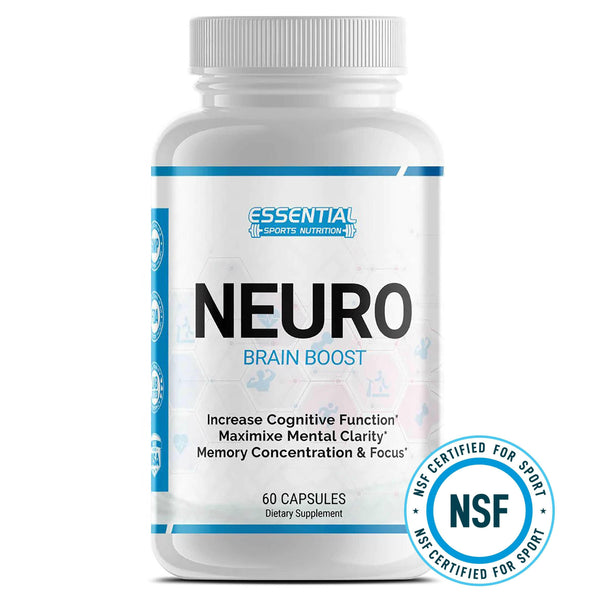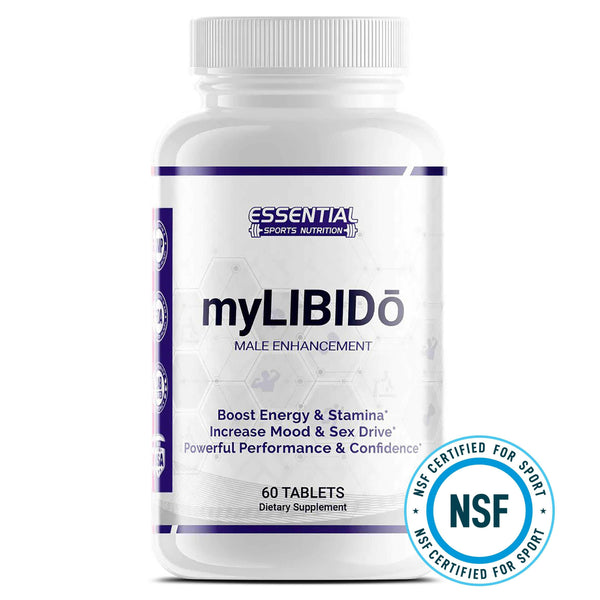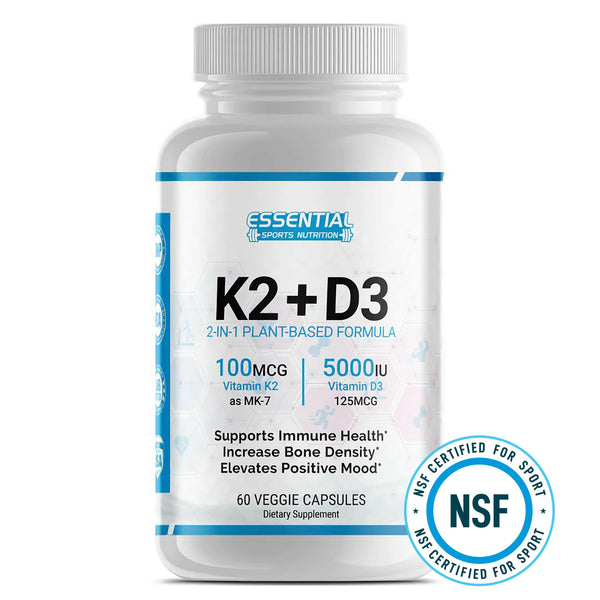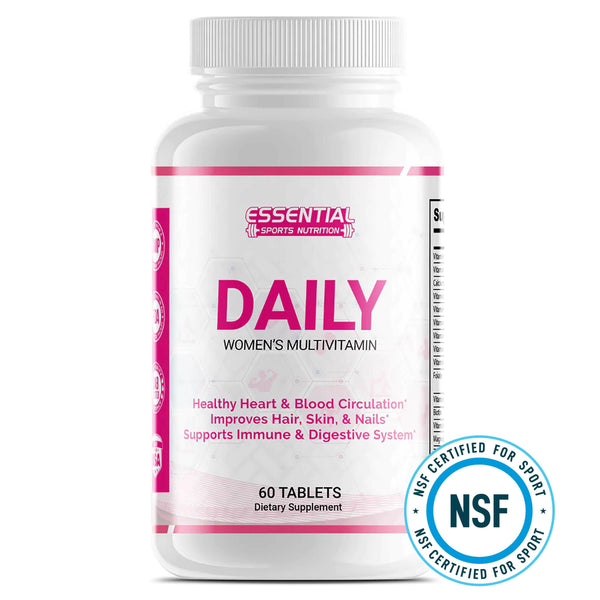Diets for High Blood Pressure - The DASH Diet
If you have high blood pressure, it's important to consider your diet as a key factor in managing and lowering your blood pressure levels. One highly recommended eating plan is the DASH diet, which stands for Dietary Approaches to Stop Hypertension. This diet focuses on consuming foods that are rich in minerals such as potassium, calcium, and magnesium, which have been shown to have a positive effect on blood pressure. By following the DASH diet, you can improve your overall health and reduce the risk of heart disease.
Key Takeaways:
- The DASH diet is a highly recommended eating plan for individuals with high blood pressure.
- It emphasizes consuming foods that are rich in minerals like potassium, calcium, and magnesium.
- The DASH diet focuses on fruits, vegetables, whole grains, lean meats, fish, poultry, beans, nuts, and low-fat dairy products.
- It limits the consumption of sodium, added sugars, and saturated fats.
- The DASH diet has been shown to help lower blood pressure and reduce the risk of heart disease.
What is the DASH Diet and How Does it Lower Blood Pressure?
The DASH diet, also known as Dietary Approaches to Stop Hypertension, is a healthy eating plan specifically designed to prevent or treat high blood pressure. It emphasizes the consumption of foods that are rich in potassium, calcium, and magnesium, which have been found to have a positive effect on blood pressure levels. By following the DASH diet, individuals can lower their blood pressure and improve their overall health.
This diet includes a variety of food groups, such as vegetables, fruits, whole grains, low-fat dairy products, lean meats, poultry, fish, beans, and nuts. These foods are low in sodium and saturated fats, which are major contributors to high blood pressure. By choosing these nutrient-dense foods, individuals can effectively lower their blood pressure and reduce the risk of heart disease.
The DASH diet is a healthy eating plan that provides a balanced approach to nutrition. It encourages individuals to consume a wide range of foods that are rich in vitamins, minerals, and antioxidants. By incorporating the DASH diet into their lifestyle, individuals can improve their blood pressure levels and promote overall well-being.
The Key Components of the DASH Diet
The DASH diet emphasizes specific food groups and servings that individuals should aim to consume daily. The recommended servings may vary depending on an individual's daily calorie needs. Here is a breakdown of the recommended servings for a 2,000-calorie-a-day DASH diet:
| Food Group | Recommended Servings |
|---|---|
| Grains | 6 to 8 servings |
| Vegetables | 4 to 5 servings |
| Fruits | 4 to 5 servings |
| Dairy Products (low-fat or fat-free) | 2 to 3 servings |
| Lean Meats, Poultry, and Fish | Six 1-ounce servings or fewer |
| Nuts, Seeds, or Legumes | 4 to 5 servings |
| Fats and Oils | 2 to 3 servings |
By following these recommended servings, individuals can ensure a balanced and heart-healthy diet while effectively managing their blood pressure.
The Importance of Sodium Restriction in the DASH Diet

The DASH diet is an effective eating plan for individuals with high blood pressure. A key component of the DASH diet is the restriction of sodium intake, also known as salt. Sodium plays a significant role in blood pressure control, as high levels of sodium can lead to an increase in blood pressure.
The standard DASH diet recommends a sodium limit of 2,300 milligrams (mg) per day, which is equivalent to approximately 1 teaspoon of salt. However, for individuals who need to further control their blood pressure, a lower sodium version of the DASH diet recommends a sodium limit of 1,500 mg per day. By reducing sodium intake, individuals can effectively manage their blood pressure and reduce the risk of heart disease.
To achieve sodium restriction in the DASH diet, it is important to be mindful of the sources of sodium in your diet. Processed foods, canned foods, and fast foods tend to be high in sodium. Reading food labels can help identify products that are low in sodium or have no added salt. Instead of using salt during cooking, opt for salt-free spices or flavorings to enhance the taste of meals.
Incorporating fresh or frozen vegetables, fresh skinless poultry, fish, and lean cuts of meat into your diet can further lower your sodium intake. By following the recommendations of the DASH diet and actively reducing sodium consumption, individuals can effectively control their blood pressure and improve their overall cardiovascular health.
Sodium Restriction in the DASH Diet
| DASH Diet Version | Sodium Limit |
|---|---|
| Standard DASH Diet | 2,300 milligrams (mg) per day |
| Lower Sodium DASH Diet | 1,500 milligrams (mg) per day |
DASH Diet: Recommended Servings for Blood Pressure Management
The DASH diet provides clear guidelines on the recommended servings of different food groups for individuals looking to manage their blood pressure. By following these recommendations, individuals can ensure a balanced and heart-healthy diet while effectively managing their blood pressure levels.
Recommended Servings for a 2,000-Calorie DASH Diet
For a 2,000-calorie daily intake, the DASH diet recommends the following servings:
| Food Group | Recommended Daily Servings |
|---|---|
| Grains | 6 to 8 servings |
| Vegetables | 4 to 5 servings |
| Fruits | 4 to 5 servings |
| Low-fat or Fat-free Dairy Products | 2 to 3 servings |
| Lean Meats, Poultry, and Fish | Six 1-ounce servings or fewer |
| Nuts, Seeds, or Legumes | 4 to 5 servings |
| Fats and Oils | 2 to 3 servings |
Following these recommended servings ensures an adequate intake of essential nutrients while promoting blood pressure management. It is important to note that these servings may vary based on an individual's specific calorie needs and dietary preferences.
"By following the recommended servings of the DASH diet, individuals can achieve a well-rounded and heart-healthy eating plan that supports blood pressure management."
Alcohol and Caffeine Consumption in the DASH Diet

The DASH diet not only focuses on the consumption of specific food groups but also takes into account the impact of alcohol and caffeine on blood pressure. While the DASH diet promotes a balanced approach to overall health, moderation is key when it comes to alcohol intake. Men are advised to limit their alcohol consumption to no more than two drinks per day, while women should limit it to one drink per day. Excessive alcohol intake can lead to increases in blood pressure levels, so it's important to be mindful of your alcohol consumption while following the DASH diet.
As for caffeine, the DASH diet does not specifically address its consumption. However, it's important to be aware that caffeine can temporarily raise blood pressure in some individuals. If you notice that caffeine has an impact on your blood pressure, it may be worth considering reducing or monitoring your caffeine intake while following the DASH diet.
Remember, the DASH diet is designed to lower blood pressure through a balance of nutrient-rich foods and healthy eating habits. By following the recommended guidelines and being mindful of your alcohol and caffeine intake, you can effectively manage your blood pressure and improve your overall health.
Reducing Salt and Sodium Intake in the DASH Diet

Reducing salt and sodium intake is a crucial component of the DASH diet, as it plays a key role in lowering blood pressure and improving overall cardiovascular health. By following specific guidelines, individuals can effectively decrease their sodium consumption and reap the benefits of this heart-healthy eating plan.
One way to reduce salt and sodium intake is by reading food labels carefully. Choosing low-salt or no-salt-added options can significantly lower sodium intake. Additionally, using salt-free spices or flavorings instead of salt can help enhance the taste of dishes without compromising on flavor.
Opting for fresh or frozen vegetables, fresh skinless poultry, fish, and lean cuts of meat can further contribute to reducing salt and sodium intake. These food choices are naturally lower in sodium compared to processed or packaged foods. By making these conscious decisions, individuals can effectively control their sodium intake and work towards lowering their blood pressure.
| Food Group | Sodium Content (mg) |
|---|---|
| Fresh vegetables | 5-50 |
| Canned vegetables | 350-900 |
| Fresh skinless poultry | 45-60 |
| Processed deli meats | 350-1,500 |
| Fresh fish | 25-100 |
| Processed fish (smoked, cured) | 400-1,200 |
| Lean cuts of beef | 40-75 |
| Processed meats (sausages, hot dogs) | 350-1,500 |
Adding these strategies into the DASH diet, individuals can effectively reduce their salt and sodium intake, ultimately leading to better blood pressure management and improved overall health.
The Role of Potassium, Magnesium, and Fiber in the DASH Diet

The DASH diet emphasizes the consumption of foods that are rich in potassium, magnesium, and fiber. These three nutrients play a crucial role in blood pressure control and overall cardiovascular health. By incorporating foods that are high in potassium, magnesium, and fiber into your diet, you can effectively manage your blood pressure and improve your heart health.
Potassium is a mineral that helps relax the walls of blood vessels, which reduces blood pressure. Good sources of potassium include bananas, oranges, tomatoes, potatoes, and yogurt. By including these foods in your diet, you can increase your potassium intake and promote healthy blood pressure levels.
Magnesium is another important mineral that supports blood pressure control. Foods such as nuts, seeds, legumes, and tuna are rich in magnesium and can help lower blood pressure. Incorporating these foods into your diet can provide you with the necessary magnesium for optimal heart health.
Fiber is also essential for maintaining healthy blood pressure levels. Foods that are high in fiber, such as fruits, vegetables, whole grains, and legumes, can help regulate blood pressure and improve overall heart health. By including these fiber-rich foods in your diet, you can effectively manage your blood pressure and reduce the risk of heart disease.
The Benefits of Potassium, Magnesium, and Fiber in the DASH Diet:
- Potassium relaxes blood vessels, reducing blood pressure.
- Magnesium supports blood pressure control.
- Fiber helps regulate blood pressure and improves heart health.
By focusing on consuming foods that are rich in potassium, magnesium, and fiber, you can harness the benefits of these nutrients and effectively manage your blood pressure. Incorporating fruits, vegetables, whole grains, legumes, nuts, and seeds into your diet can provide you with the necessary nutrients for optimal heart health.
| Food | Potassium Content (mg) | Magnesium Content (mg) | Fiber Content (g) |
|---|---|---|---|
| Banana (1 medium) | 400 | 31 | 3.1 |
| Spinach (1 cup, cooked) | 840 | 157 | 4.3 |
| Almonds (1 ounce) | 200 | 77 | 3.5 |
| Blackberries (1 cup) | 233 | 29 | 7.6 |
| Quinoa (1 cup, cooked) | 318 | 118 | 5.2 |
The Effectiveness of the DASH Diet in Lowering Blood Pressure

The DASH diet has been widely studied and proven to be effective in lowering blood pressure and reducing the risk of heart disease. By following this balanced eating plan, individuals can achieve significant improvements in their blood pressure readings and overall heart health.
Several clinical trials have demonstrated the positive impact of the DASH diet on blood pressure control. In one study, participants who followed the DASH diet experienced an average reduction of 11.4 mm Hg in systolic blood pressure and 5.5 mm Hg in diastolic blood pressure. These reductions were even greater for individuals with hypertension, with systolic blood pressure decreasing by an average of 16.1 mm Hg and diastolic blood pressure decreasing by 9.9 mm Hg.
Long-term adherence to the DASH diet has also been shown to have lasting benefits. A study published in the New England Journal of Medicine found that individuals who followed the DASH diet for eight weeks experienced sustained improvements in blood pressure levels even after they stopped following the diet. This highlights the importance of adopting the DASH diet as a long-term lifestyle change for ongoing blood pressure management.
The Role of Low Sodium Intake in the DASH Diet
A key component of the DASH diet's effectiveness in lowering blood pressure is its emphasis on reducing sodium intake. High levels of sodium can cause fluid retention and increase blood pressure. By limiting sodium intake and following the DASH diet's recommended sodium guidelines, individuals can effectively lower their blood pressure. A study published in the American Journal of Clinical Nutrition found that reducing sodium intake to the recommended levels in the DASH diet resulted in significant reductions in blood pressure, particularly for individuals with hypertension.
| DASH Diet Group | Standard Western Diet Group |
|---|---|
| Average Systolic Blood Pressure Reduction | No Significant Reduction |
| Average Diastolic Blood Pressure Reduction | No Significant Reduction |
| Percentage of Participants Achieving Normal Blood Pressure | None |
The table above further demonstrates the effectiveness of the DASH diet in lowering blood pressure. In a randomized controlled trial, participants who followed the DASH diet experienced significant reductions in both systolic and diastolic blood pressure compared to those who followed a standard Western diet. Additionally, none of the participants in the standard Western diet group achieved normal blood pressure levels, further highlighting the superiority of the DASH diet in blood pressure management.
Overall, the DASH diet offers a scientifically-backed and effective approach to lowering blood pressure and reducing the risk of heart disease. By adopting this healthy eating plan and making long-term lifestyle changes, individuals can take control of their blood pressure and improve their cardiovascular health.
Heart-Healthy Eating Habits for Blood Pressure Management

Eating a heart-healthy diet is crucial for managing blood pressure and reducing the risk of heart disease. By adopting a balanced and nutritious eating plan, individuals can effectively control their blood pressure and improve their overall cardiovascular health. Here are some key guidelines for incorporating heart-healthy eating habits:
- Choose Healthy Food Sources: Opt for quality nutrition from foods such as fruits, vegetables, whole grains, low-fat dairy products, skinless poultry, fish, nuts, legumes, and non-tropical vegetable oils. These foods are rich in essential nutrients and provide a range of health benefits.
- Limit Unhealthy Fats: It is important to limit the intake of saturated and trans fats, as they can raise cholesterol levels and contribute to heart disease. Instead, choose foods low in saturated fats, such as lean meats, poultry without skin, and non-fat or low-fat dairy products. Replace trans fats with healthier fats like olive oil or avocado.
- Manage Sodium Intake: High sodium levels can increase blood pressure. To reduce sodium intake, avoid processed and packaged foods, which often contain high amounts of sodium. Instead, opt for fresh or minimally processed foods and season with herbs and spices instead of salt.
- Control Sugar Intake: Excessive sugar consumption can contribute to weight gain and elevated blood pressure. Avoid sugary drinks and opt for water, unsweetened beverages, or beverages sweetened with natural alternatives like stevia or erythritol.
"By adopting heart-healthy eating habits, individuals can effectively manage their blood pressure and improve their overall cardiovascular health."
By following these guidelines and making gradual dietary changes, individuals can adopt a heart-healthy eating plan that supports blood pressure management. It is important to consult with healthcare professionals or registered dietitians to create a personalized diet plan that meets specific needs and goals. With consistency and commitment, heart-healthy eating habits can have a significant impact on blood pressure control and overall well-being.
| Key Tips for Heart-Healthy Eating |
|---|
| Choose quality nutrition from fruits, vegetables, whole grains, low-fat dairy products, skinless poultry, fish, nuts, legumes, and non-tropical vegetable oils. |
| Limit unhealthy fats, such as saturated and trans fats, and opt for healthier fats like olive oil or avocado. |
| Manage sodium intake by avoiding processed and packaged foods and seasoning with herbs and spices instead of salt. |
| Control sugar intake by avoiding sugary drinks and opting for water, unsweetened beverages, or natural sweeteners. |
Tips for Making Heart-Healthy Food Choices
Making the right food choices is crucial to managing your blood pressure and maintaining a heart-healthy diet. By reading food labels, looking for the Heart-Check mark, reducing sodium intake, controlling sugar intake, and avoiding trans fats, you can ensure that you're making the best choices for your health.
Reading Food Labels
Reading food labels is an essential skill for making informed decisions about the foods you consume. When reviewing labels, pay attention to the amounts of sodium, sugar, and trans fats. Look for products that have lower levels of these ingredients to support healthy blood pressure management. Familiarize yourself with serving sizes and the nutrient content per serving to accurately gauge your intake.
The Heart-Check Mark
The American Heart Association's Heart-Check mark is a valuable tool for identifying heart-healthy products. When you see this mark on a food item, it means that it meets the criteria for low saturated fat, trans fat, and sodium content. Choosing products with the Heart-Check mark can help you make quick and confident choices that align with your heart-healthy goals.
Sodium Reduction
Reducing sodium intake is crucial for managing blood pressure. Opt for low-salt or no-salt-added options when available. Incorporate fresh or frozen vegetables into your meals, as they tend to have lower sodium content compared to canned vegetables. Experiment with flavoring your dishes using salt-free spices and herbs to reduce your reliance on added salt.
Sugar Intake and Trans Fats
Controlling sugar intake is important for maintaining a healthy weight and blood pressure. Limit your consumption of sugary beverages, processed foods, and sweets. Be mindful of hidden sugars in condiments, dressings, and sauces. Additionally, avoid foods high in trans fats, such as fried snacks and certain margarines, as they can increase the risk of heart disease. Opt for healthier fats from nuts, seeds, and oils.
| Sodium (mg) | Sugar (g) | Trans Fat (g) | |
|---|---|---|---|
| Processed Lunch Meat | 600 | 1 | 0 |
| Fresh Chicken Breast | 70 | 0 | 0 |
| Soda | 40 | 39 | 0 |
| Fresh Orange | 0 | 14 | 0 |
By following these tips and making heart-healthy food choices, you can take control of your blood pressure and support your overall cardiovascular health. Remember to prioritize reading food labels, look for the Heart-Check mark, reduce sodium and sugar intake, and avoid trans fats. Small changes in your food choices can make a big difference in maintaining a healthy heart.
The Role of Sugar, Nitrates, and Trans Fats in Blood Pressure Control

When it comes to managing blood pressure, it's not just about limiting sodium intake. Paying attention to other factors in your diet, such as sugar, nitrates, and trans fats, is also important. Excessive sugar consumption can contribute to weight gain and elevated blood pressure levels. It's crucial to be mindful of added sugars in processed foods and beverages and opt for healthier alternatives.
Nitrates, commonly found in processed meats like bacon, hot dogs, and deli meats, have been linked to an increased risk of heart disease and hypertension. These additives are often used to preserve and enhance the flavor of processed meats. To lower your intake of nitrates, choose fresh meats or look for nitrate-free alternatives.
Trans fats, also known as partially hydrogenated oils, are found in many processed snacks, fried foods, and certain margarines. These fats have been linked to an increased risk of heart disease and insulin resistance. To reduce your intake of trans fats, read food labels carefully and choose foods that are free of partially hydrogenated oils.
| Sugar Intake | Nitrate Content | Trans Fat Content | |
|---|---|---|---|
| Foods to Limit | Processed sweets, sugary beverages | Processed meats (bacon, deli meats) | Processed snacks, fried foods |
| Healthier Alternatives | Fresh fruits, unsweetened beverages | Fresh meats or nitrate-free options | Whole foods, homemade snacks |
By being mindful of your sugar intake, opting for fresh meats instead of processed ones, and avoiding foods high in trans fats, you can take control of your blood pressure levels and improve your overall health. Remember, small changes in your diet can have a big impact on your well-being.
Conclusion
Managing high blood pressure through a heart-healthy diet is crucial for individuals looking to improve their blood pressure levels. Diets specifically designed for high blood pressure, such as the DASH diet, can be highly effective in achieving this goal. By prioritizing the consumption of fruits, vegetables, whole grains, lean meats, fish, poultry, nuts, and low-fat dairy products, individuals can effectively lower their blood pressure and reduce the risk of heart disease.
It is important to work closely with healthcare professionals and make gradual dietary changes to ensure long-term success in managing high blood pressure. Adhering to a heart-healthy diet, such as the DASH diet, can provide optimal results. It is also essential to monitor sodium intake, reduce sugar consumption, and avoid foods high in trans fats and nitrates to further control blood pressure levels.
By following these guidelines and making conscious choices to prioritize a heart-healthy diet, individuals can effectively manage their high blood pressure and improve their overall cardiovascular health. Remember, managing high blood pressure is a long-term commitment, and with the right diet and lifestyle changes, it is possible to achieve and maintain healthy blood pressure levels.
Lower Blood Pressure FAQs
Q: What is the DASH diet?
A: The DASH (Dietary Approaches to Stop Hypertension) diet is an eating plan that is designed to help lower blood pressure.
Q: How does the DASH diet help lower blood pressure?
A: The DASH diet helps lower blood pressure by emphasizing foods that are low in sodium and high in potassium, calcium, magnesium, and fiber.
Q: What kinds of foods are included in the DASH eating plan?
A: The DASH eating plan includes a variety of foods such as fruits, vegetables, whole grains, lean meats, fish, poultry, nuts, and low-fat dairy products.
Q: Can the DASH diet help control high blood pressure?
A: Yes, the DASH diet has been shown to help control high blood pressure and is recommended by the American Heart Association for this purpose.
Q: What are some key components of the DASH diet?
A: Key components of the DASH diet include limiting salt intake, consuming foods rich in potassium, calcium, and magnesium, and reducing the consumption of high-fat and high-cholesterol foods.
Q: Are legumes and leafy greens important in the DASH diet?
A: Yes, legumes and leafy greens are important components of the DASH diet as they are high in nutrients and help reduce blood pressure.
Q: Does the DASH diet help reduce the risk of high blood pressure in young individuals?
A: Yes, the DASH diet may help reduce the risk of high blood pressure in young individuals when followed as part of a healthy diet.
Q: Can the DASH diet be effective in preventing high blood pressure?
A: The DASH diet, when combined with other healthy lifestyle choices, can help prevent high blood pressure and may lower blood pressure in people with hypertension.
Q: What role do lean meats play in the DASH diet?
A: Lean meats are included in the DASH diet in moderation, as they provide essential nutrients and can be part of a balanced eating plan to help control high blood pressure.
Q: How can the DASH diet help control blood pressure without medication?
A: The DASH diet can help control blood pressure without medication by promoting a diet rich in fruits, vegetables, whole grains, lean proteins, and low-fat dairy, which are beneficial for managing blood pressure in people with or at risk of high blood pressure.
Source Links
- https://www.heart.org/en/health-topics/high-blood-pressure/changes-you-can-make-to-manage-high-blood-pressure/managing-blood-pressure-with-a-heart-healthy-diet
- https://www.webmd.com/hypertension-high-blood-pressure/high-blood-pressure-diet
- https://www.mayoclinic.org/healthy-lifestyle/nutrition-and-healthy-eating/in-depth/dash-diet/art-20048456




























